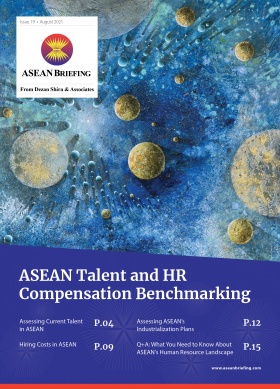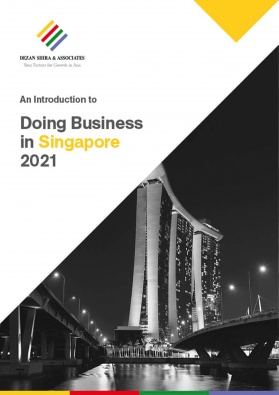Why ASEAN’s Industrialization Plans Will Necessitate Local Human Resource Development
We round up some of ASEAN’s major industrialization plans and key investment targets, which will necessitate upskilling and development of human resources.

ASEAN’s industrialization plans
ASEAN member countries are targeting specific sectors that will shift their economies up the global value chain and thus from low to medium-and high-skilled industries.
These prioritized sectors will require specific human resource development (HRD) strategies as the structural change from low to high-skilled industries requires time to achieve, particularly since low-skilled industries are still running profitably.
We provide an overview of several of these target sectors for the national industrialization plans in ASEAN’s major economies.
Indonesia
Indonesia shows strong growth potential for foreign investors looking at long-term commitments in ASEAN.
Manufacturing in Indonesia
The government is pledging to transform Indonesia’s low-value manufacturing capabilities into a sector that can produce complex products and new technologies. The sector annually contributes to 20 percent of the national GDP and employs 15 percent of the total workforce.
By upgrading this sector, the government hopes to turn Indonesia into a manufacturing hub in ASEAN, rivaling those of Germany and South Korea by 2030.
Indonesia’s digital economy
Indonesia’s digital-based economy is predicted to be valued at US$130 billion by 2025, making it the largest in Southeast Asia.
The e-commerce sector will play a vital role in this industry, with over 170 million people already engaging in some form of online shopping. Further, the digital economy is also set to impact the growth of new sub-sectors within this sector, such as telemedicine, online education, and electronic payment systems.
Malaysia
Malaysia has shown to be a popular destination for foreign companies based in China looking to alternative locations to supplement their Chinese operations.
Manufacturing in Malaysia
Malaysia is increasing mechanization in its manufacturing sector to maintain productivity growth. The country already produces over eight percent of global back-end semiconductor output. Local players are hoping to move up the value chain to be better able to compete globally and are looking to develop local talent to help facilitate this goal.
Healthcare in Malaysia
The country is competing with Thailand and Singapore to become a medical hub in ASEAN, especially in the field of medical tourism. The healthcare industry is expected to be valued at US$30 billion by 2027, fueled by increasing domestic demand from an increasingly affluent and aging population.
Medical tourism will also play an important role, with the country attracting more than one million medical tourists in 2019, generating US$433 million in revenues. This was an increase from the US$361 million garnered in 2018.
Malaysia’s digital economy
Malaysia’s digital economy now contributes to one-fifth of the national GDP, valued at over 270 billion ringgit (US$65 billion), making the country among the most digitally mature in the region. COVID-19 has accelerated the industry’s share of GDP due to the increase in online shopping, online education, and telemedicine. Despite this, six out of 10 companies are only at the basic digitalization stage, highlighting the future capabilities of this sector.
Singapore
Strategically located in the region, Singapore has the expertise and infrastructure to enable foreign investors to access other ASEAN markets.
Manufacturing in Singapore
Manufacturing is Singapore’s largest industry, contributing to between 20 and 25 percent of GDP. Key sub-sectors include chemicals, electronics, biomedical sciences, logistics, and transport engineering. The country’s Economic Development Board (EDB) laid out a roadmap to attract investments from lead adopters of advanced manufacturing.
Singapore’s pharmaceutical and biomedical industries are fast becoming leading drivers of economic growth not only for the country’s healthcare industry but also its manufacturing sector. The country’s deep base of skilled talents, pro-business environment, infrastructure, and thriving research and development landscape has attracted some of the largest pharmaceutical firms in the world.
This has resulted in Singapore being one of the few countries able to export more pharmaceutical products (approx. US$8.1 billion in 2019) than it imports (US$3.19 billion in 2019). Moreover, Singapore’s medical devices industry is expected to be worth US$1.3 billion by 2022 due to increasing government spending, an ageing local population, as well as demand from the region.
More than 60 multinational medical technology (medtech) companies leverage the country’s strong engineering capabilities and high-quality assurance to manufacture high-value products, ranging from life science instruments to contact lenses.
Status as an entrepot trade and financial hub in Southeast Asia
Singapore will continue to enhance its status a key trading and financial hub in ASEAN, and as such will continue to develop its local talent pool as well as attract highly skilled foreign workers.
The country issued a new work permit in January 2021, named Tech.Pass, aimed at attracting technology entrepreneurs and experts. Multinationals will continue to be incited by Singapore’s stable legal, tax, and business environment.
As a country that has gradually established itself as a leader in global financial services, the city-state has been placed more in the spotlight as a regional hub for trade since the protests in its rival, Hong Kong. Singapore also offers foreign investors a diverse investment community. The country is home to the regional headquarters of some 7,000 multinational firms, with more than half running their Asia-Pacific businesses from the city-state, while Hong Kong had just over 1,000.
Further, the Port of Singapore is strategically located at the crossroads of East-West trade channels and is connected to 600 ports in over 120 countries. It also handles over 37.2 million twenty-foot equivalent units (TEUs) of containers and 626.2 million tons of cargo annually, making it one of the world’s busiest.
Thailand
Before the onset of COVID-19, Thailand had one of the fastest growing economies in the Indochina and Greater Mekong subregion. Driven by both abundant natural resources and a cost-effective labor force, the country features consistently among the most popular FDI destinations in the region.
Manufacturing in Thailand
The manufacturing sector constitutes 30 percent of Thailand’s total GDP, covering a variety of goods, such as textiles and garments, footwear, electronics, automobiles and parts, and integrated circuits.
The government is looking to new technologies, such as cloud computing, the internet of things (IoT), and robotic automation to upgrade this sector and attract foreign investments. The country is a major exporter of hard drives and is the world’s second-largest exporter of washing machines and air conditioners.
Furthermore, Thailand is fast becoming a hub for aerospace industry, and maintenance, repair, and overhaul (MRO) services. The country’s major airlines — Thai Airways, Bangkok Airways, and Thai Lion Air — have all established MRO centers to service their aircraft and those of airlines that service Thailand and the region.
Thailand’s MRO industry is expected to be valued at US$2.9 billion by 2037, boosted by its fleet of 800 aircraft and servicing over 180 million passengers in the country.
Vietnam
Prior to the COVID-19 pandemic, the influx of foreign investment into Vietnam resulted in its economy growing at seven percent in 2019, one of the fastest in the region.
Electronics manufacturing in Vietnam
Vietnam climbed the ranks as an electronics exporter from 47th in 2001 to 12th in 2019, caused by the supply chain shifts from China into Southeast Asia. Its mobile exports were ranked second highest worldwide, valued at over US$50 billion, in 2019. The electronics industry is already dominated by established foreign companies, accounting for over 90 percent of total exports as well as 80 percent of the domestic market.
About Us
ASEAN Briefing is produced by Dezan Shira & Associates. The firm assists foreign investors throughout Asia and maintains offices throughout ASEAN, including in Singapore, Hanoi, Ho Chi Minh City, and Da Nang in Vietnam, Munich, and Esen in Germany, Boston, and Salt Lake City in the United States, Milan, Conegliano, and Udine in Italy, in addition to Jakarta, and Batam in Indonesia. We also have partner firms in Malaysia, Bangladesh, the Philippines, and Thailand as well as our practices in China and India. Please contact us at asia@dezshira.com or visit our website at www.dezshira.com.







